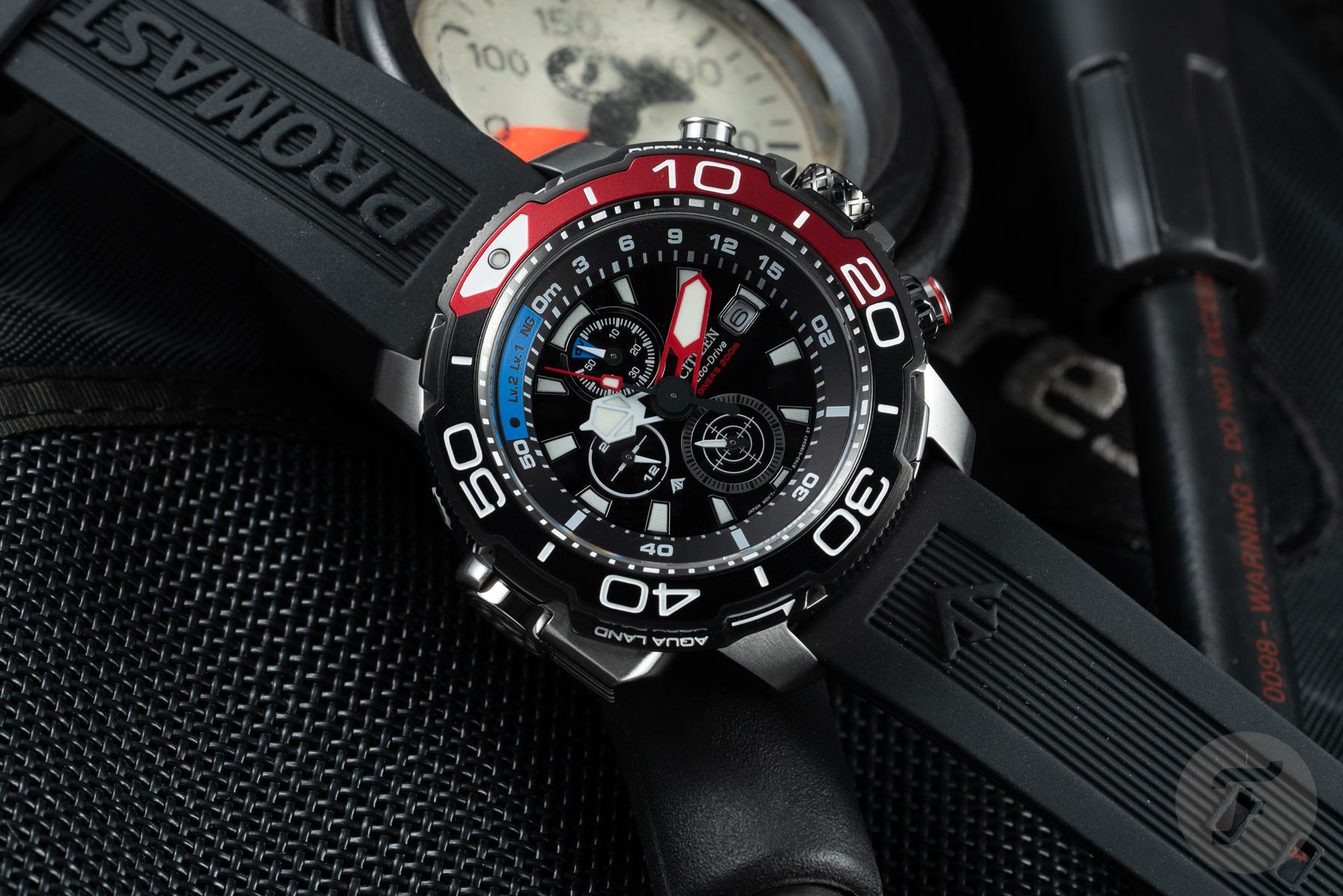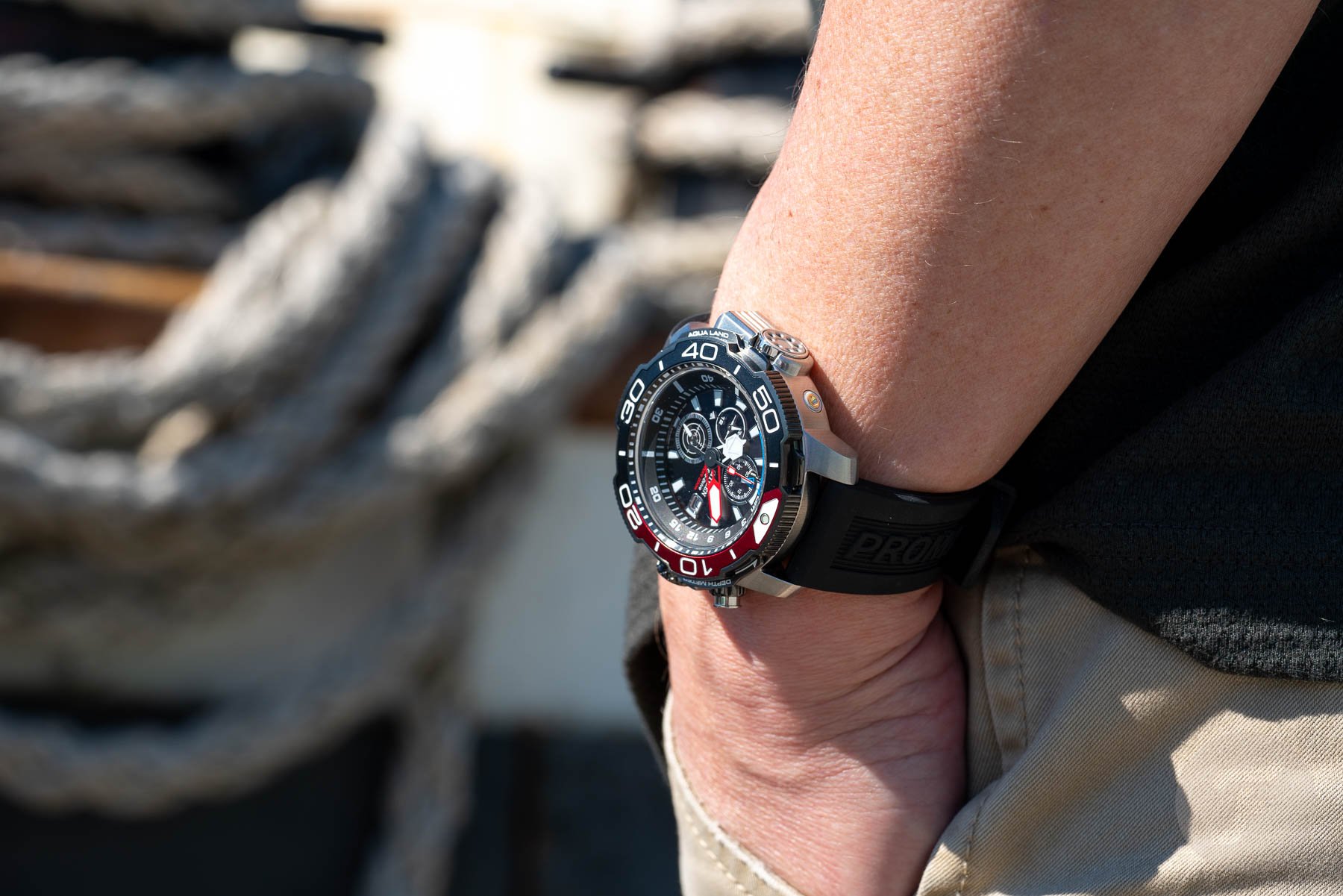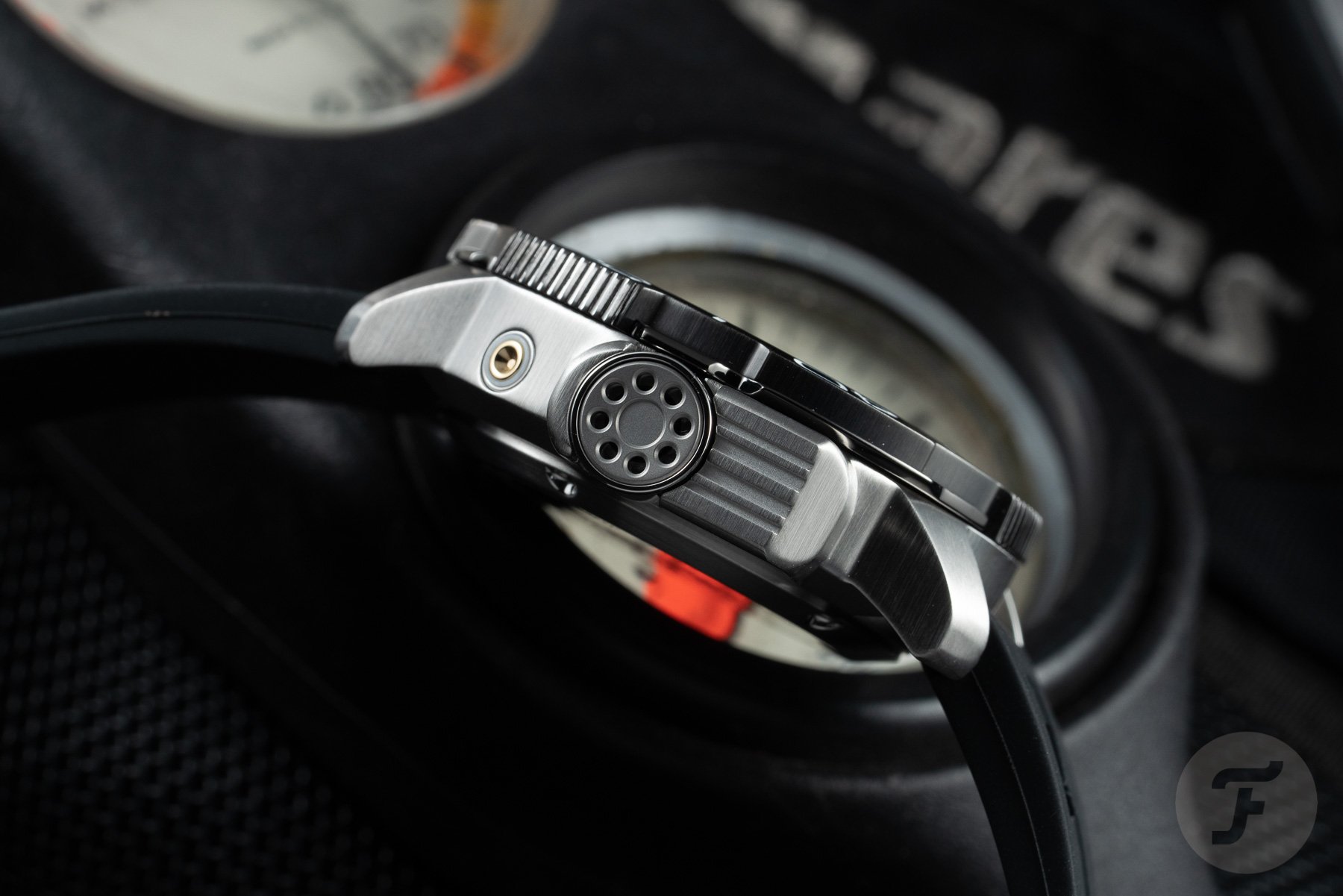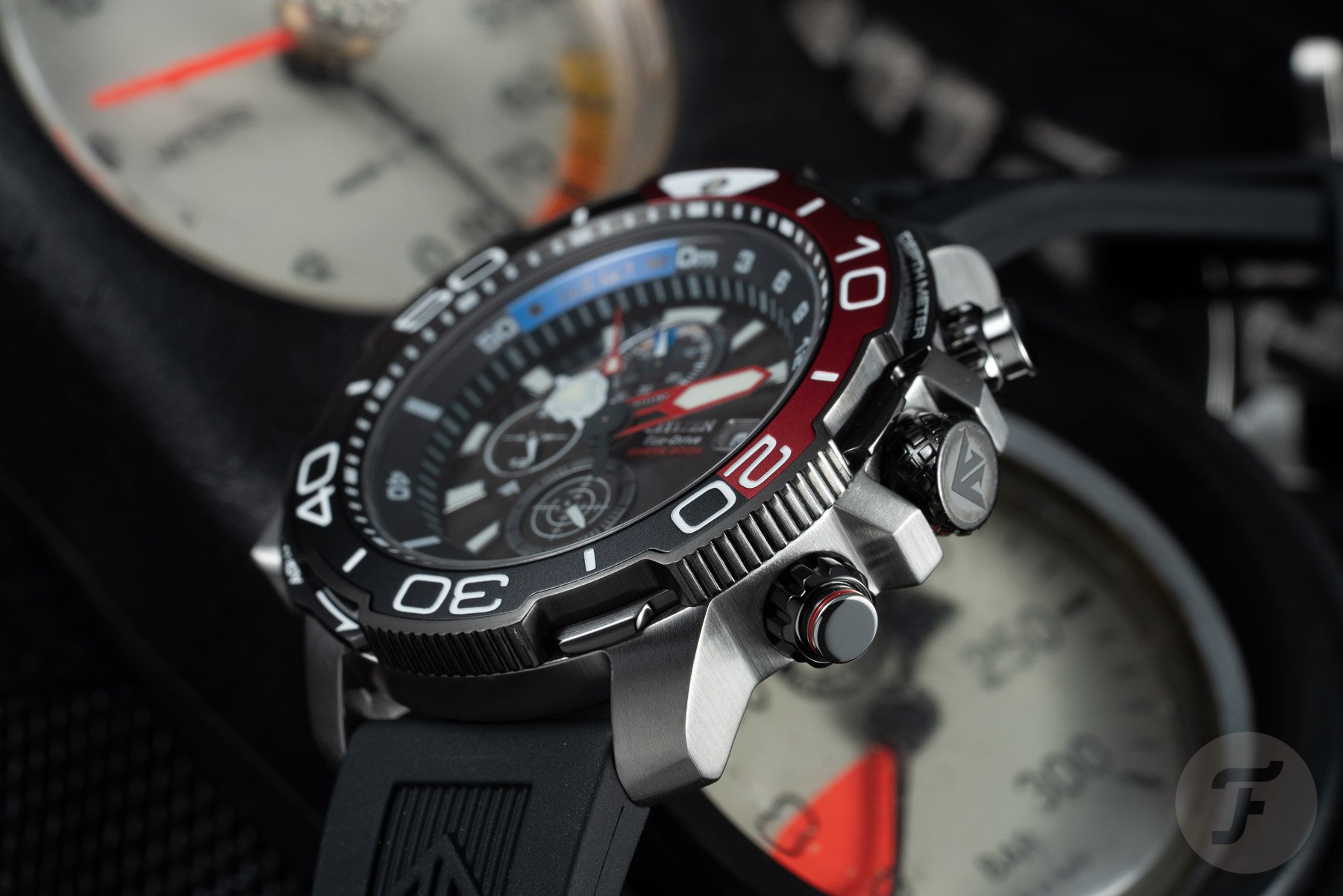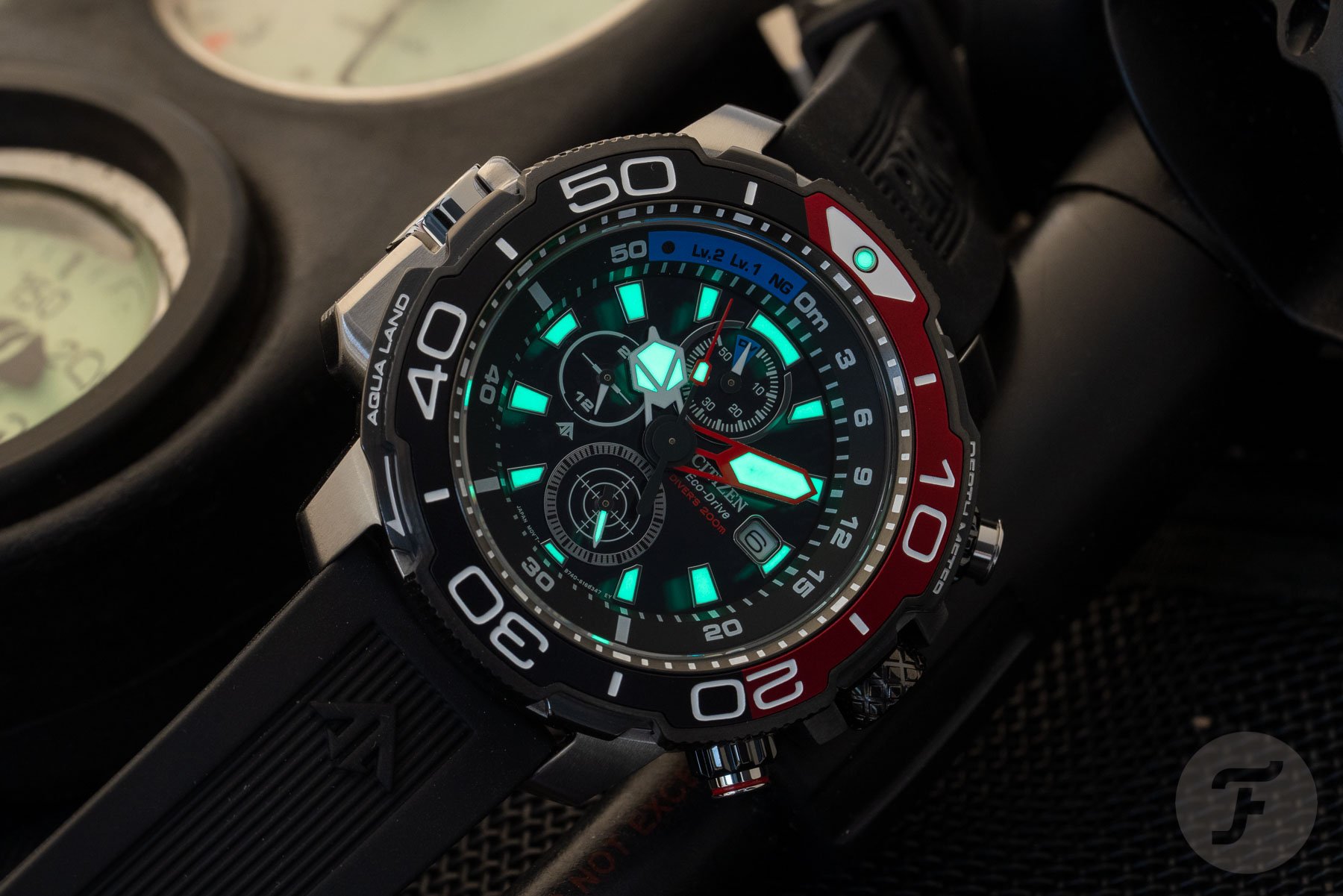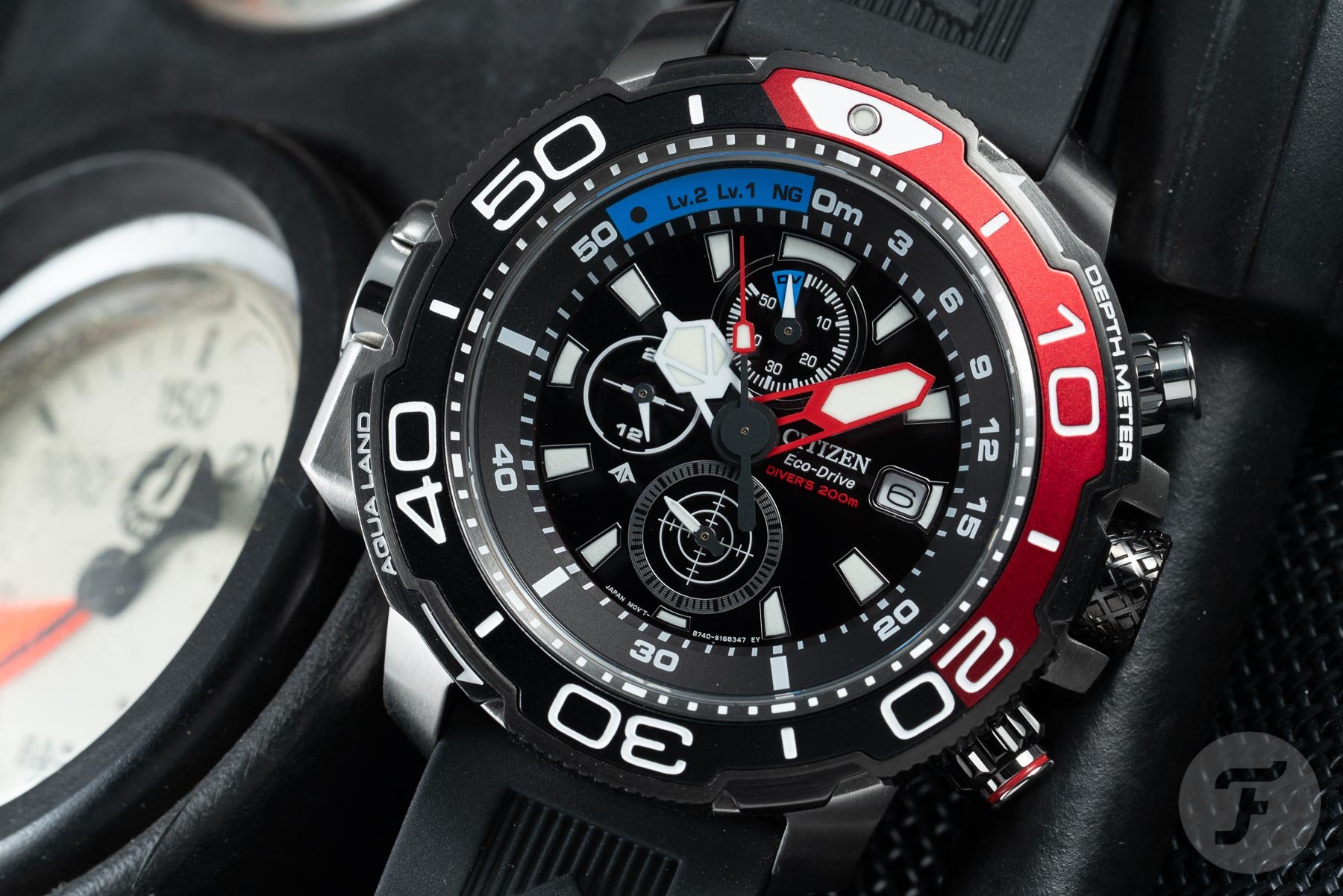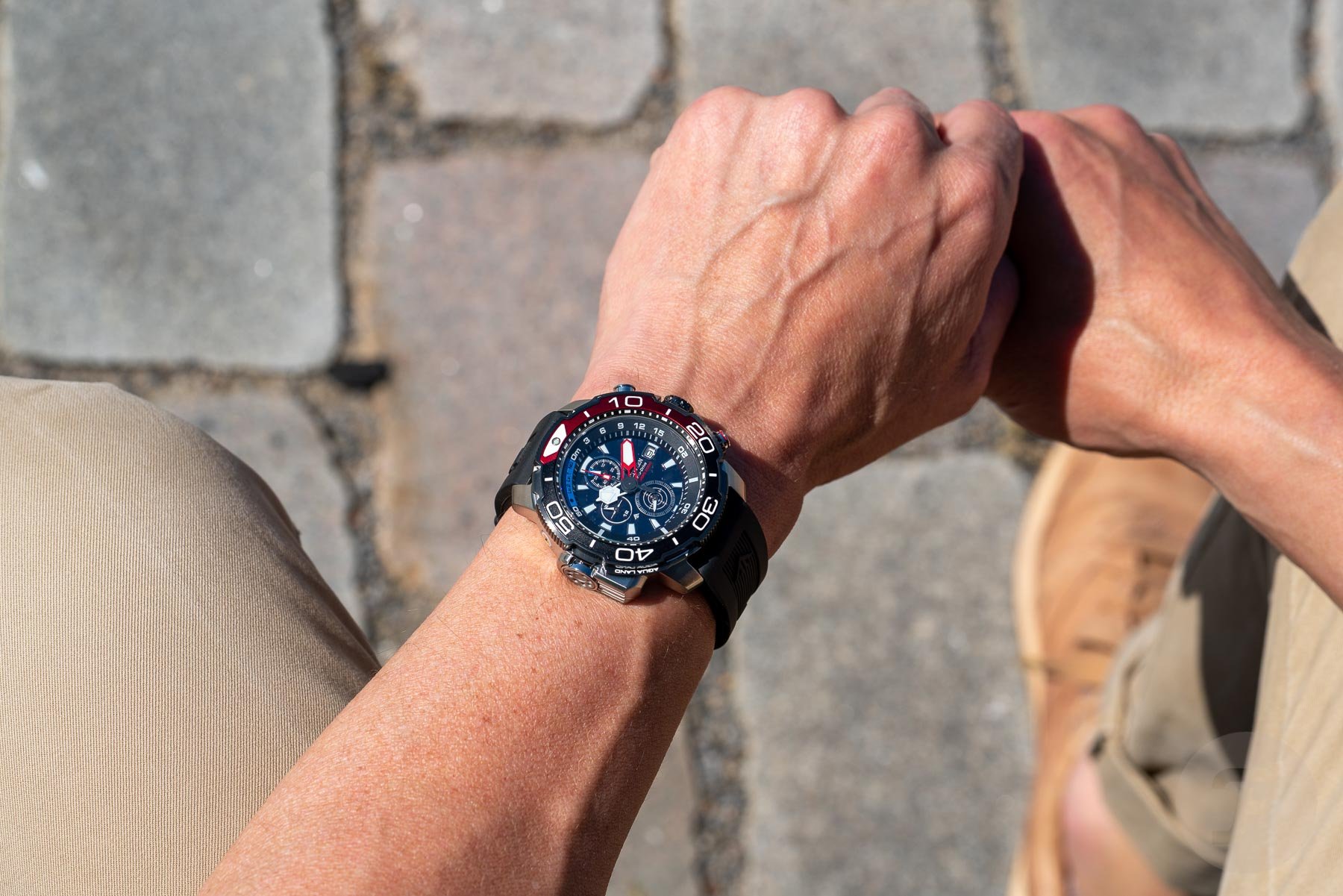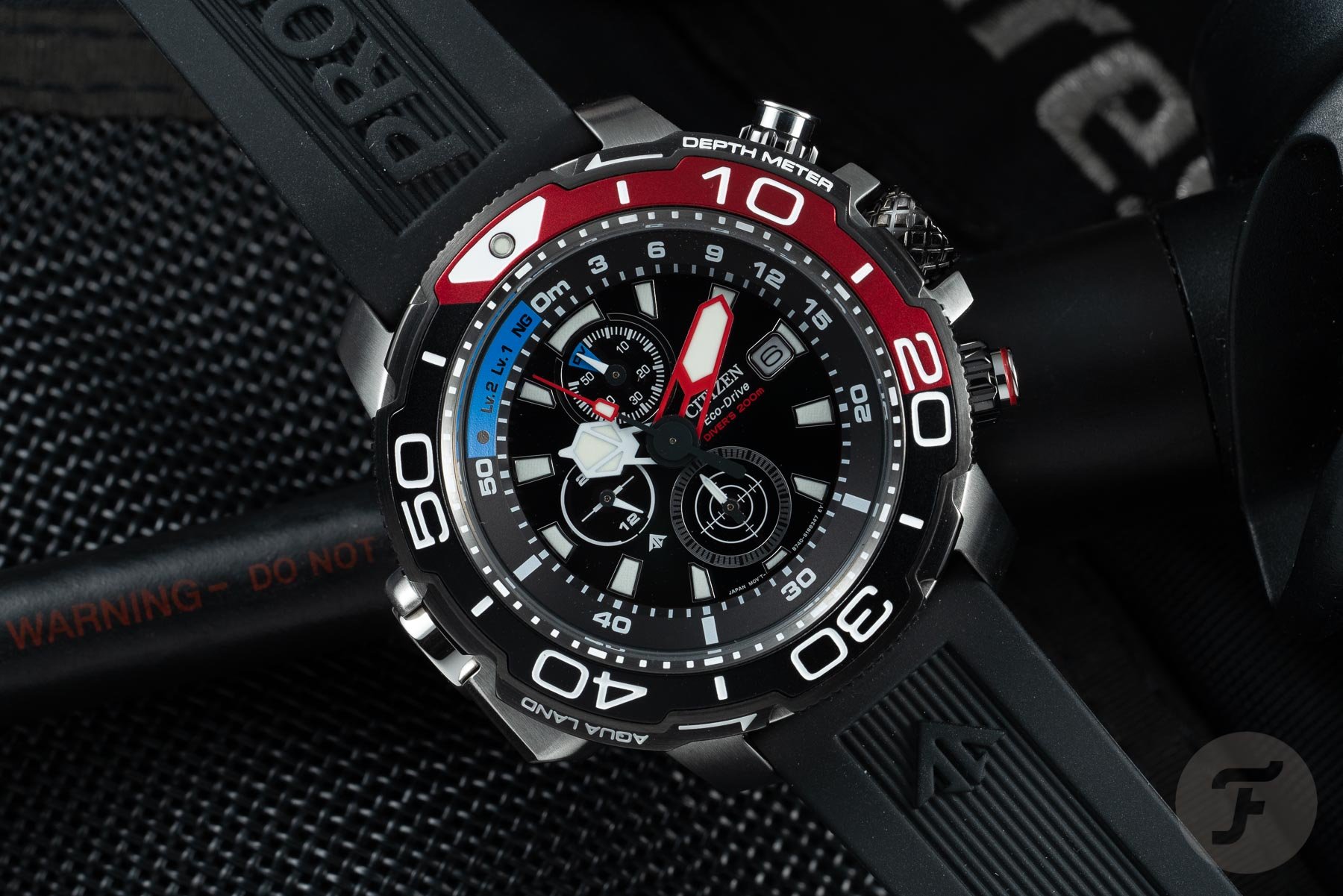Hands-On With The Citizen Promaster Aqualand BJ2167-03E Dive Watch
Dive watches are incredibly popular with watch collectors and not just those collectors who are qualified to venture beneath the waves. There seems to be a particular love for dive watches from collectors who rarely even leave the confines of their desks. Hence the popular term “desk divers” became a part of everyday vocabulary in the watch-collecting community. Until recently, my own collection was dominated by dive watches. While I am a qualified diver, I’ve not been in quite some time, so the desk diver tag is probably more appropriate at this point in time. So, why then do collectors continue to adore dive watches when they will likely never be able to push their watches to the limits of their abilities?
Well, there are, of course, different types of dive watches. In their most basic form, dive watches are known for being robust watches that can pretty much handle whatever you throw at them. Water obviously presents no issues, but nor do the rigors of everyday life on land either. Knocks and shocks only add character to a dive watch’s exterior. The rotating dive bezel has many uses in everyday life, too, aside from the intended purpose to track elapsed time on a dive. Suppose the owner does take a basic dive watch on a dive. In that case, it’s likely to be a backup timekeeper to a more specialized dive computer. Even recreational diving requires the diver to track their depths, oxygen, and more.
An advanced companion
Then you get more advanced dive watches that specialize in life in the deep, with tools and features that are only of use in sub-aquatic habitats. These watches are more likely to be a diver’s sole timekeeping companion for recreational dives — for technical dives, divers will always have a good dive computer. You may think that advanced dive watches are a recent technological advancement. Wrist-mounted dive computers are still relatively young, having come a long way in the last 20 years or so.
Well, you may then be surprised to hear that Citizen offered divers a dive watch with some serious technical chops for the era. The original Citizen Aqualand model, released in 1985, was the world’s first diver’s watch with an electronic depth sensor. In 1989, Citizen renamed the model the Promaster Aqualand. For more than 30 years, the Aqualand name has been synonymous with professional diver’s watches incorporating the latest sensor technologies.
Welcome to the Promaster Aqualand
The Aqualand aesthetic has changed a lot from 1985 up until the modern day. Along the way, Citizen abandoned the digital depth gauge in favor of a more traditional analog gauge. Fast forward to 2021, and Citizen has released the latest update to the Aqualand. Coming in three color options (1 of which is a limited edition), it is the non-limited Aqualand BJ2167-03E I have in front of me today.
It’s a chunky monkey, but this sets the tone for what this watch is, right off the bat
My first impression of the Aqualand BJ2167-03E is that Citizen put function over form for this watch. It’s a big watch, clocking in at 46mm diameter on the wrist. Thickness-wise, it’s “only” 16mm thick, which is actually in proportion given the large diameter. It’s a chunky monkey, but this sets the tone for what this watch is, right off the bat. It’s a serious dive companion with a glut of useful features that demands to be taken seriously.
Electronic depth gauge
The case has a rugged and somewhat industrial-looking silhouette. It’s rounder than previous models, but still not perfectly so, thanks to the protrusion at 9 o’clock. For those of you familiar with the original Aqualand, you’ll know that this is the electronic depth sensor and water ingress point. The concept is simple: water enters the case through the perforated holes in the side of the case and interacts with a membrane system. The Promaster Aqualand can sense when the watch is underwater and automatically enter dive mode.
…a lighthearted touch on what is otherwise a serious watch.
When in dive mode, the central function hand (what is usually a central seconds hand) switches from indicating the battery charge, measured in “levels”, to indicate the wearer’s current depth, up to 50 meters, using the scale on the outermost section of the dial. The small sub-dial at 12 o’clock records maximum depth. The sub-dial at 6 o’clock indicates the going seconds, with a neat little sonar style pattern on the dial — a lighthearted touch on what is otherwise a serious watch.
A chronograph too!
If all that wasn’t enough, the Promaster Aqualand also features a chronograph mode. The chronograph mode uses the function hand and the max-depth sub-dial. It allows you to use the Aqualand as a 50-minute chronograph. Sadly, though, you obviously cannot use the chronograph mode while in dive mode. Instead, you have to use the rotating bezel to measure your elapsed dive time. To use the chronograph, you press down the lower pusher on the side of the case for three seconds in order to move the hands on the dial into chronograph mode. A further reminder that the chronograph cannot be used underwater is the fact that the pushers have screw-down collars to keep water out and prevent accidental use while submerged.
Other features of the Citizen Promaster Aqualand BJ2167-03E include a date window at 3 o’clock and a 24-hour sundial at 9 o’clock, which primarily functions as an AM/PM indicator.
Legibility, first and foremost
On the topic of the dial, despite the relatively busy layout, it remains incredibly legible at all times. This is a crucial feature for an advanced dive watch. Citizen uses large, partially skeletonized hands to stand out from the sub-dials. The all-important minute hand is a lovely striking red color to add a little extra visual pop. It also rather nicely matches the red 20-minute section of the aluminum bezel insert. As you’d expect, Citizen has liberally applied lume to the hands and essential markings. Legibility does not suffer in low-light conditions. The large bezel numerals are not lume, though, which would have been a nice touch.
The Citizen Eco-Drive family
Citizen’s Eco-Drive caliber B740.1 quartz movement powers the Promaster Aqualand BJ2167-03E. Being part of the Eco-Drive family means it is a solar-powered quartz movement. The Aqualand’s dial allows light to pass through it and hit the photovoltaic cell, which, in turn, charges the internal battery. Thankfully you don’t just need a natural light source to charge it, though. Even indoor fluorescent lighting helps keep things ticking along. Being a quartz movement, it offers much greater accuracy out of the box than a mechanical counterpart might be able to. Citizen quotes it at ±15 seconds a month, along with a 180-day power reserve when fully charged. Pretty impressive stuff!
A rubber strap with a premium feel
Completing the package is a synthetic rubber strap. Citizen has used polyurethane for the Aqualand strap, which, although much cheaper to manufacture than natural rubber or silicon rubber, actually feels nicer and more premium. You don’t get that “sticky” feel that sometimes plagues other rubber straps. Citizen also kindly includes a second, longer strap length so that you’re able to strap the watch on over a bulky wetsuit or even drysuit. As a side note, I never quite got on with drysuits. I could never quite control the internal air distribution, so my legs tended to float off above my head. When I last went diving (in the North Sea in November), I used a 7mm semi-dry suit and underlayer that did the job admirably.
Closing thoughts on the Citizen Promaster Aqualand BJ2167-03E
So let’s take a step back and look at the watch as a whole and see how the Citizen Promaster Aqualand BJ2167-03E fared on the wrist. Well, it’s a big watch. There’s no denying that, but it does the job it was designed for admirably. I mean, OK, I haven’t taken this watch on a dive, so I can’t put it through its paces in a live testing environment, but on paper and in hand, it ticks all the right boxes. For a recreational dive, I wouldn’t feel uncomfortable taking this watch as my sole timekeeping companion. I’ve rarely exceeded 20m on a dive, which means the Citizen Promaster Aqualand BJ2167-03E would be ideally suited to my needs.
It was perhaps slightly less unwieldy on the wrist than the on-paper specs might suggest, and I imagine underwater they are further negated. Would I be likely to wear this watch in everyday life? Probably not, as I don’t have the wrists for it, but for some, this watch could easily be a daily wear. I think the real standout point about this watch is that it retails for a very wallet-friendly price of €695. When you consider all of the features you’re getting for that price, it adds up to excellent value for money.
You can find out more about the Promaster Aqualand BJ2167-03E on the Citizen website.
Follow me on Instagram: @davesergeant

